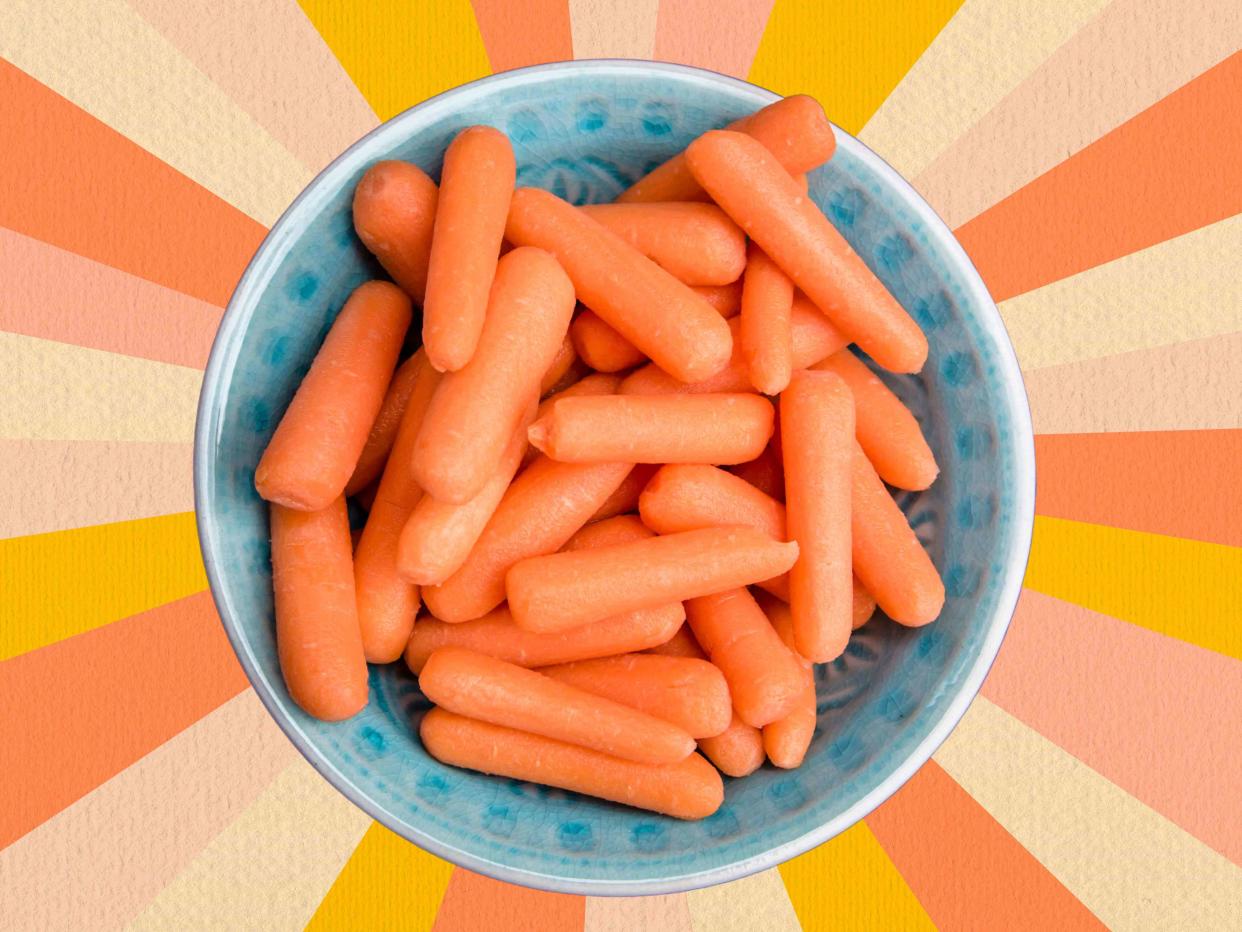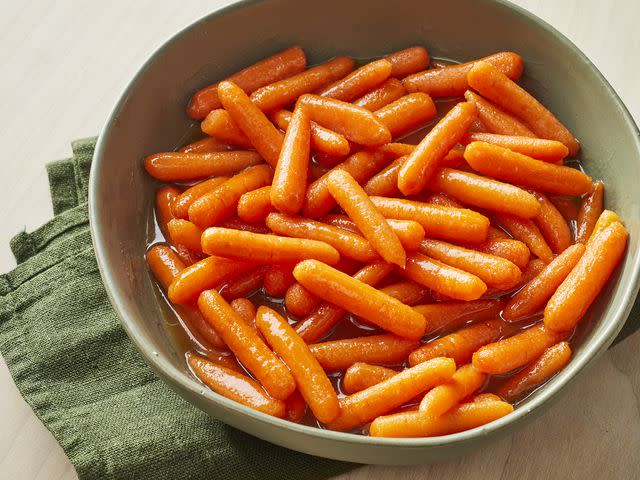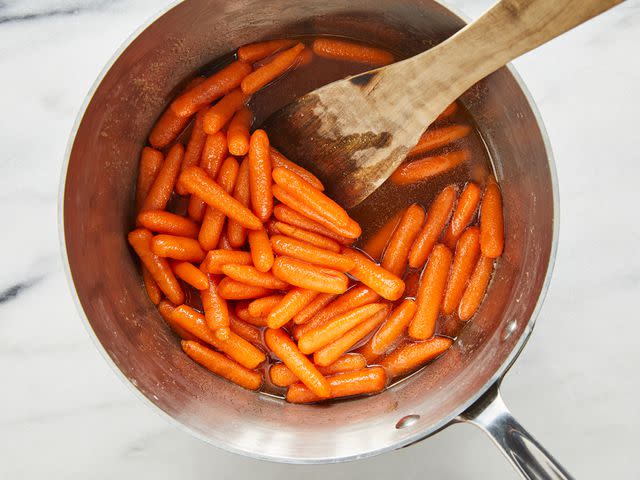What Are Baby Carrots—And How Did They Get So Small?

Westend61/Getty Images
Skinless and polished, primed and ready for snack trays and easy dipping—how did baby carrots arrive piled into little bags at the market? Are farmers everywhere nabbing up carrots before they reach maturity simply for our nibbling and lunchbox convenience? Not quite.
What Are Baby Carrots?
Think of baby carrots as the “fun-sized” version of regular carrots. Like the candy companies did by taking the candy bar and making it snackable—"poppable," if you will—California carrot farmer Mike Yuosek did with the carrot in the early 1980s.
Why would Yuosek want to do this? Simple business. As something that grows, carrots don’t exactly pluck out of the ground completely equal in look and size; many will be too unique to sell in stores because they’re a bit small, way too big, or perhaps a shape that some would call ugly (but really just means they wouldn’t fit neatly on the shelf or in the bags). What’s a hardworking farmer to do—toss those out?
Mike was having none of that. Instead, he brought in an industrial bean cutter to cut and shape these oddball carrots, along with any other scrap pieces, into the delightfully smooth little nubs we know as baby carrots.
How Are Baby Carrots Made?
Broken fragments of carrots, rather than being tossed aside, are peeled and shaped into 2-inch segments.
Since carrots grow in the ground, baby ones are rinsed thoroughly with water and a small amount of chlorine (it’s nothing to worry about; it’s less than what’s in your drinking water) to ensure the health and safety of anyone snacking right from the bag. Once bagged, filtered tap water is added to keep them hydrated and fresh since they’re naked without their outer peel to shield them.

Baby Carrots vs. Baby-Cut Carrots
If this were a pay-per-view fight, the network would have to refund all the tickets. That’s because baby carrots and baby cut carrots are exactly the same thing, just labeled differently from brand to brand, so there’s no way to put them up against one another.
Some other labels you might see are petite or matchstick-style baby carrots. They even come in colored varieties, like purple or yellow.
How to Store Baby Carrots
As with most bagged produce, you should always check the use-by date on the package before purchasing. Unopened bags should be stored in the fridge and eaten within 30 days of the packaging date.
Once opened, consider how long it takes you, your family, or roommates to go through a bag. If the answer is quickly, then there’s nothing to do but snack away. If the answer is more than a couple days, rehome the little guys from the bag to a container and cover them in water (unless, of course, the bag you bought them in is resealable).
If the water in the container gets murky, change it out. Regardless, this will elongate the life of your baby carrots by perhaps even weeks.
Carrots getting some white stuff on them? Nothing to fret about. It’s a natural thing called “carrot blush,” which means they dried out a bit. Go ahead and eat them, but if it’s unappealing to you, a refreshing soak in a water bath for a few minutes will sort them out again.
Can You Freeze Baby Carrots?
Just like their full-sized counterparts, you can absolutely freeze baby carrots and enjoy them for up to a year.
Going about this comes down to five simple steps:
Dice the baby carrots or slice them into ¼-inch slices.
Blanch them in boiling, well-salted water for 3 minutes before transferring them rapidly with a slotted spoon or small, shallow chinois strainer into an ice bath. This step is important because it keeps the carrots from being mushy once thawed.
Drain and pat dry with paper towels. Removing as much moisture as possible will help keep ice crystals at bay and retain the carrots' texture after freezing.
Spread the carrots in a single layer on a parchment-lined baking sheet. Freeze.
Transfer to a zip-top bag and remove as much air as possible.
You can also freeze leftover cooked carrots by skipping straight to step 4. Easy peasy. And speaking of easy, just toss your frozen carrots into whatever you’re cooking; there's no need to thaw.

Dotdash Meredith Food Studios
How to Cook Baby Carrots
Carrots are so versatile and necessary in cooking; they’re a part of the sacred mirepoix, a flavor-building foundation used for centuries. Baby carrots are no different. From snacks to sides, these little guys can be sweet or savory, used raw or cooked, and play well with almost every flavor combination. Try one of these recipes the next time you snag a bag:
Read the original article on All Recipes.

